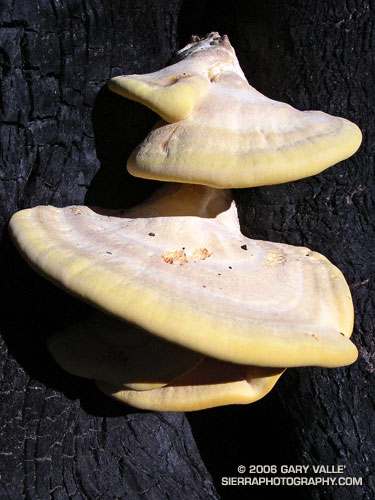
A bracket fungus (prob. Laetiporus gilbertsonii) on a burned eucalyptus in the Simi Hills.

A bracket fungus (prob. Laetiporus gilbertsonii) on a burned eucalyptus in the Simi Hills.
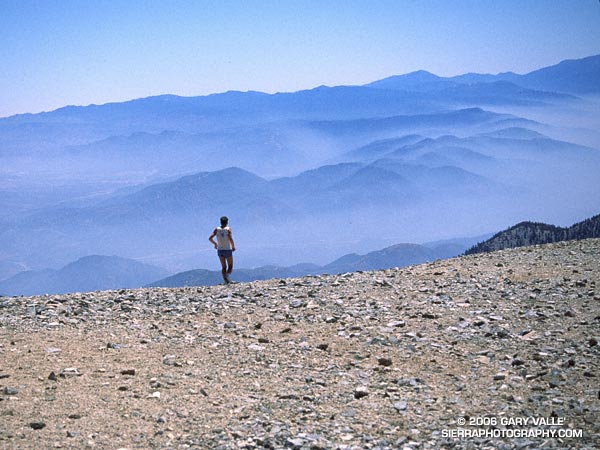
It’s mid-August, which means that Labor Day, and the Mt. Baldy Run to the Top, are only a couple of weeks away. There’s nothing quite like the experience of racing to the top of a 10,000 ft. peak en masse with 500+ other runners.
The nearly 8 mile course, with 4000′ of elevation gain, has been done in 1:00:49 by Matt Ebiner (1987), and in 1:15:32 by Carrie Garritson (1988). She was age 11 at the time! According to an article in the February / March 2002 Issue of TrailRunner Magazine “wild” Bill Lombardo has done the run barefoot!
More about the runner in this photo, the Mt. Baldy Run to the Top, and a race that climbs Mt. Baldy twice can be found in my SierraPhotography.com page Mt. Baldy, Runner Leaving the Summit. The photograph is from August 1991.
Related post: Mt. Baldy Run to the Top 2007
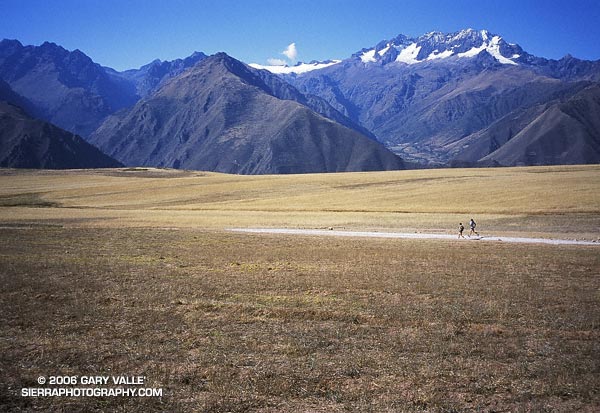
We did this acclimatization run early in our running adventure in Peru. The grain field is on a plateau at about 11,000′, and parallels the Sacred Valley of the Incas, and Urubamba River.
The run took us across the plateau, down to the Maras salt mines, and then down into the Sacred Valley at a little over 9000′. Excited about the trip, we ran most of the way back to the hotel in Yucay. That evening we enjoyed Pisco Sours and an excellent dinner, and then drifted off to sleep dreaming of big mountains and expansive views.
The high peaks beyond the valley are part of the Cordilla Urubamba and are over 5000m (16,400′). The highest point on the Inca Trail, the “pass of the dead woman,” is at about 13,800′. Later in the trip we would cross two 5000m passes while running a circuit of Mt. Ausangate.
The photograph is from July 15, 2003. The trip organizer, Devy Reinstein of Andes Adventures, is a accomplished runner, and a genius at travel logistics and organization.
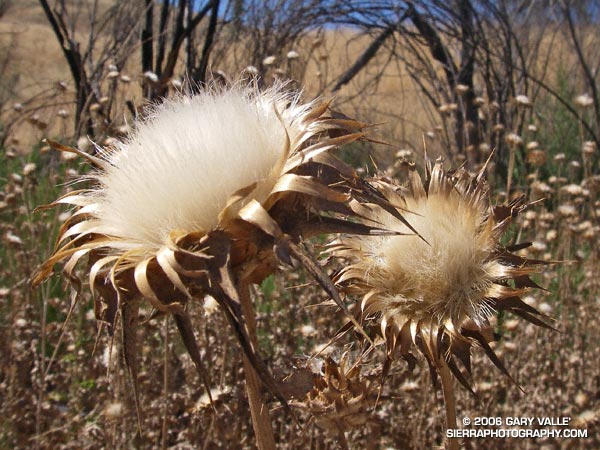
A native of the Mediterranean, Milk Thistle is an invasive weed that appears to be increasingly profuse in roadside areas of Upper Las Virgenes Canyon Open Space Preserve. Generally considered detrimental in the wild, the plant has been used medicinally for at least 2000 years, and is cultivated in Texas, Canada and Argentina.
According to the Washington State Noxious Weed Control Board, Milk Thistle (Silybum marianum) produces about 190 seeds per flower, and over 6000 seeds per plant. Dense stands are reported to produce 1.4 million viable seeds and four tons of vegetation per acre! Here is a closer look at an individual Milk Thistle seed.
This photograph was taken on a run at Ahmanson Ranch on July 13, 2006. The posting Convoluted includes a photograph of the white-veined leaf, and a photo of a dense stand of Milk Thistle in Las Virgenes Canyon. Additional information regarding Milk Thistle, including its history, laboratory studies, clinical trials, and adverse effects can be found in the National Cancer Institute’s Milk Thistle (PDQ®).

Cucumber Beetles (Acalymma trivittata) munching on the pistillate blossom of the wild gourd Calabazilla (Cucurbita foetidissima). The photograph is from Sunday’s Ahmanson-Cheeseboro run.
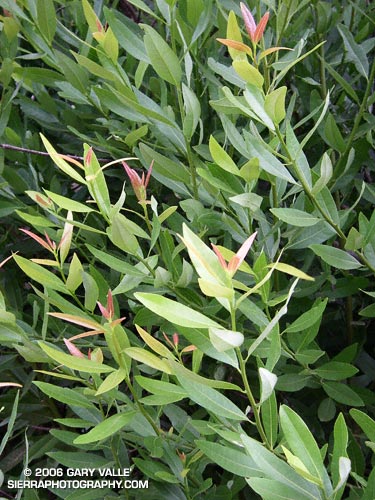
A study of new growth on a California Bay Laurel (Umbellularia californica) at Sage Ranch that was burned and completely defoliated in the 2005 Topanga Fire. These are crown sprouts growing from the base of the tree.